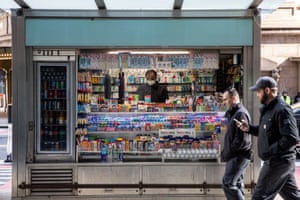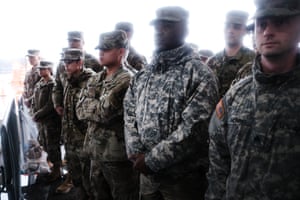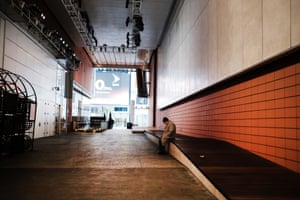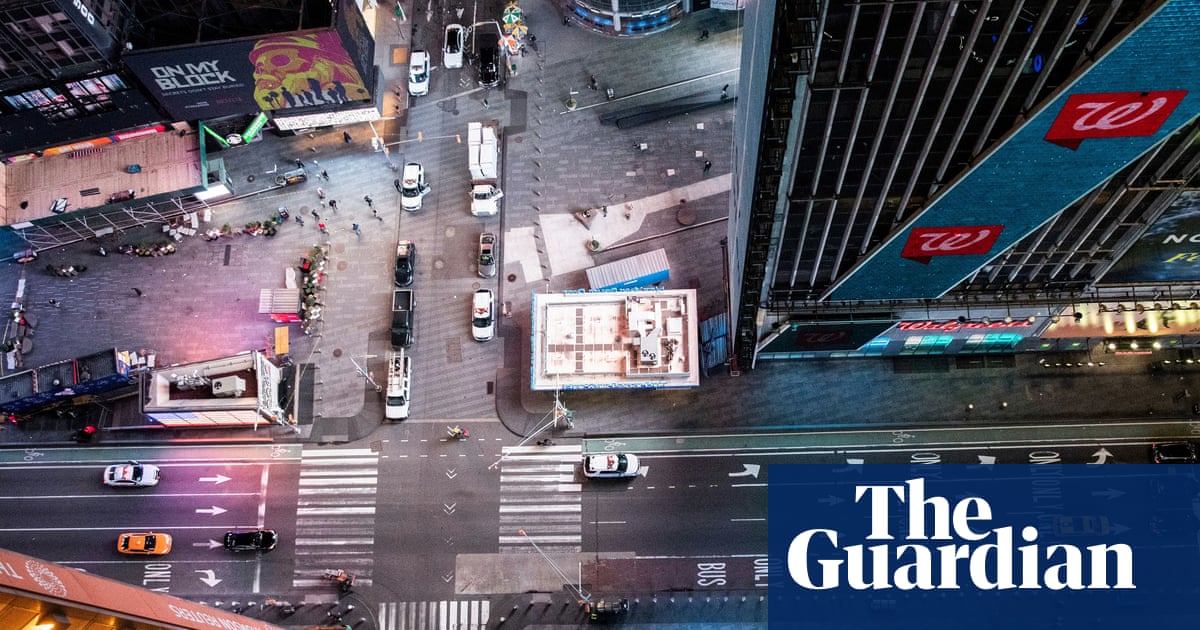The number of infected people in New York City has risen rapidly, and experts are worried about glaring gaps in preparedeness

New Yorkers cant say they werent warned. Andrew Cuomo, the governor of the state, spelled it out a week ago when he told the 8 million residents of New York City that as soon as testing was widely available the coronavirus numbers are going to be shocking.
Even with his dire warning ringing in their ears, New Yorkers were still stunned when the truth finally hit on Thursday. Within a single day, the number of confirmed cases in the city had more than tripled to 3,954 almost a third of all coronavirus cases in the nation.
Of those, almost one in five of the sickened individuals have needed hospital care, much higher than is typical, underlining the massive challenge to the citys health system. At least 26 have died.
Were seeing an explosion of cases here in New York City, Bill de Blasio, the mayor, said.
Thats just the start. The latest figures reflect only the tip of an iceberg, said Theodora Hatziioannou, an associate professor in virology at the Rockefeller University in Manhattan.
Keep in mind that estimates suggest each infected person transmits the virus to another two to three people, who in turn can transmit to others, and you begin to grasp the magnitude of the problem.
A contagion that began as a west coast crisis, affecting a nursing home in Washington state and upending daily life in California, is now striking the east coast with a vengeance. New York City has become the undisputed center of the US pandemic, inheriting that grim distinction from Seattle, which has fewer than a fifth of New Yorks recorded cases.

Today, a city that prides itself as the worlds capital of finance, fashion and the future finds itself asking an existential question: can it cope with something as age-old as a disease?
The answer is not wholly comforting. The scale of the mountain that the citys hospitals and health workers must climb over the next days and weeks is daunting, and there are glaring gaps in preparedness.
Hatziioannou set outfor the Guardian a projection for New York that while speculative does indicate the potentially overwhelming test that lies ahead. Building into her model the assumption that 15% of the citys 8 million people become infected, thats an estimated 1.2 million people with 240,000 requiring hospitalization in isolation and 48,000 having such severe respiratory and other problems they would require intensive care in an ICU.
If all those get sick at the same time, then I do not see how the NYC healthcare system will be able to cope, Hatziioannou said.
The only hope, as most New Yorkers are coming to recognize, is that social distancing will flatten the curve and not only reduce the number of infections but spread them over time to avoid a catastrophic spike. We have to try and distribute the number of infections over as long a period as possible. That way, critical cases will not require ICU treatment at the same time, she said.
She added: Even with such measures, New York will struggle.
That struggle was on full display on Friday when De Blasio let his frustration and anxiety rip on MSNBC, saying that the city would run out of basic medical supplies including ventilators and masks by early April. Im telling you, in two weeks time or three weeks time, we will have nothing left, he said.
Its self-evident that things are bad in New York when De Blasio who based his mayoral and recent failed presidential campaigns upon his leftwing credentials starts pleading with Donald Trump to send in the US military. The military is needed in New York right now, he told NBC News.
The mayor wants federal reinforcements to help deliver extra stocks of essential equipment. He has presented Trump with a shopping list of 15,000 ventilators for those patients unable to breathe alone, 3 million N95 respirator face masks to protect essential health workers and 50m surgical masks.
New York has some of the finest hospitals in the US, but when it is presented with a contagious disease of such potentially monumental proportions the weaknesses are glaringly exposed. At every stage in the process of caring for patients fighting Covid-19 there are now projected shortfalls.
That starts with the most basic item hospital beds. The city has about 20,000 beds and De Blasio has unveiled plans to add an additional 8,200.

In advance of the deluge, hospital managers have desperately sought to empty their bed capacity by discharging regular patients and suspending all elective surgeries as New York-Presbyterian hospital has done.
With existing hospitals expected to become overrun within days, provision is also being made for creating ad-hoc intensive care units and field hospitals using tents, commandeered hotel rooms and a disused nursing home in Brooklyn. Appeals have gone out to the federal government all week to dispatch the army corps of engineers to help build emergency hospitals, with Cuomo announcing on Friday that they are in.
Ventilators too are in potentially short supply. The machines, which are critical in keeping the most severely afflicted alive by helping them to breathe, are a top priority, Cuomo said on Friday. Ventilators, ventilators, ventilators: that is the greatest need, he said.
The state as a whole could need 37,000 ventilators but currently only has 3,000. Cuomo appealed for any health facility with spare machines to hand them over.
New York city has one advantage that it has been through these wars before. New Yorkers have grappled with anthrax, Ebola, West Nile virus and the 2009 H1N1 swine flu epidemic in which up to 1 million people fell sick. The problem this time round is the unusually high transmission and lethality rates of Covid-19.
Experience is also not enough unless it is coupled with decisive leadership from the top. On that level, New Yorks early response to the coronavirus crisis has been less than exemplary.
On Monday, De Blasio was spotted at his favorite haunt, the YMCA gym in Park Slope, Brooklyn, despite mounting calls from his own office for New Yorkers to avoid social gathering places and with Broadway shows and the citys 27,000 restaurants already having been told to close.
Those terrible optics followed days in which De Blasio was bitterly criticized by teachers and New York scientists Hatziioannou among them for hesitating over closing the citys public-sector schools. It was not until Monday, at precisely the time he was seen in the gym, that schools were shuttered until at least 20 April.
And De Blasio and Cuomo, who have a long history of mutual antagonism despite both being Democrats, have also been squabbling over how far to take social isolation.
De Blasio has been pressing for a shelter-in-place order citywide, like the San Francisco Bay Area and, from Thursday, all of California. Cuomo overruled until Friday then announced that all non-essential workers are mandated to stay home, from Sunday evening.

Meanwhile, both New York politicians are in a state of barely concealed apoplexy towards Trump. The White House has so far failed to move on many of the citys requests, and when the president did agree amid much fanfare to dispatch a navy hospital ship the USNS Comfort to New York the Pentagon was forced embarrassingly to point out that the vessel was undergoing repairs and will not be ready until April.
Where the hell is the federal government in the middle of the biggest crisis we have seen in generations? De Blasio howled on Friday.
The city is very obviously not in the greatest shape to enter a conflagration.
But then, the city that never sleeps has always confounded the critics with its tenacity and resilience. What happens over the next two weeks will test it to the limit.
Read more: https://www.theguardian.com/us-news/2020/mar/20/new-york-center-us-coronavirus


Recent Comments